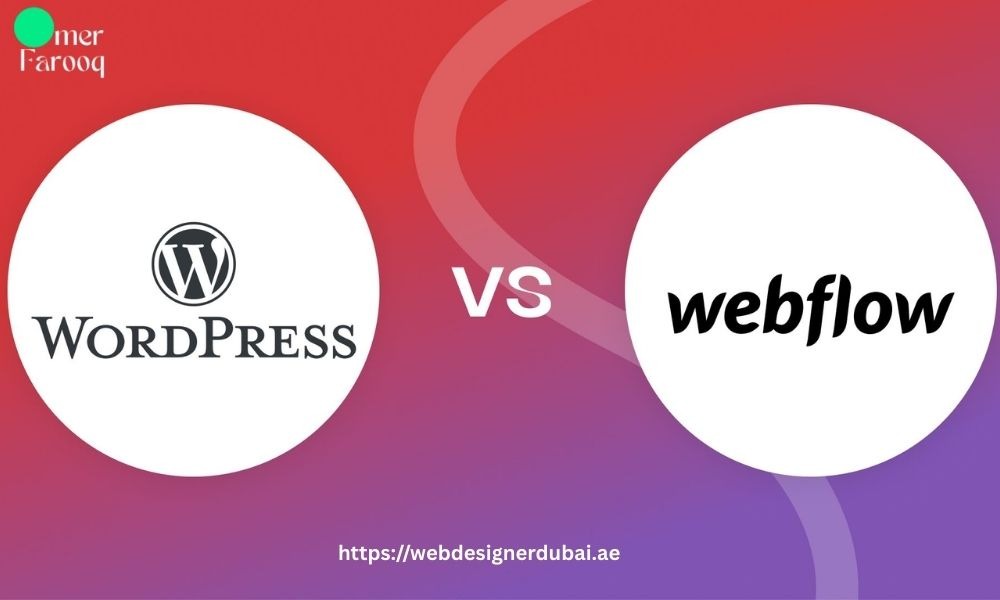Starting a website today is easier than ever, but choosing the right platform is still a big decision. Two of the most popular options are WordPress and Webflow. Both can help you build and manage websites, but they approach it in very different ways.
Here’s a simple breakdown of how WordPress vs Webflow compare—so you can decide which one fits your needs best.
WordPress
WordPress is the most widely used website builder in the world, powering more than 40% of all websites. It started as a blogging tool, but now it’s capable of running almost anything—from personal blogs to full e-commerce stores.
Why People Choose WordPress
- Huge library of plugins for everything from SEO to online shopping.
- Easy to update content without needing coding skills.
- A large community with countless tutorials and guides for support.
Things to Consider
- You’re responsible for updates, backups, and security.
- A poorly chosen host or too many plugins can slow your site down.
- Some technical knowledge is helpful for performance optimization.
Best for bloggers, small businesses, and anyone who wants maximum flexibility with room to grow. If you want expert support, hiring an experienced WordPress developer Omer Farooq can help you build a powerful, customized site.
Web flow
Web flow has grown quickly in popularity, especially among designers and startups. Its main strength is a visual design editor that lets you create websites by dragging, dropping, and styling elements—while it writes clean code in the background.
Why People Choose Webflow
- Complete design control without touching code.
- Built-in CMS for blogs, portfolios, or product listings.
- Hosting, security, and backups are included automatically.
- Clean, fast websites without relying on third-party plugins.
Things to Consider
- Costs more than basic WordPress hosting plans.
- Fewer integrations and extensions compared to WordPress.
- Exporting or moving your site away from Webflow isn’t always simple.
Best for creative professionals, agencies, and businesses that want a polished, professional-looking site with less technical hassle. If you want to stand out in a competitive market, partnering with a expert web designer in Dubai can bring your Webflow project to life.
WordPress vs Webflow: Head-to-Head
| Feature | WordPress | Webflow |
|---|---|---|
| Setup | Requires hosting and manual setup | Cloud-based, quick setup |
| Ease of Use | Beginner-friendly with themes & plugins | Visual, design-focused, learning curve |
| Customization | Thousands of plugins & themes | Pixel-level control, fewer templates |
| Blogging/CMS | Advanced features for blogs & content | Good for simple blogs and portfolios |
| E-commerce | WooCommerce for large-scale stores | Built-in, better for smaller catalogs |
| Performance | Depends on hosting & optimization | Hosting included, fast by default |
| Maintenance | Updates and backups are your job | Fully managed by Webflow |
Cost Breakdown
- WordPress: Free to install, but you’ll pay for hosting, premium themes, and plugins. It can start cheap, but costs may grow as your site becomes more advanced.
- Webflow: Works on a subscription model. Plans cost more upfront, but they include hosting, security, and updates—so expenses are predictable.
Security and Maintenance
- With WordPress, you’ll need to stay on top of plugin and theme updates to avoid vulnerabilities. Security and backups are in your hands.
- With Webflow, these are handled for you, which means less risk and fewer technical headaches. The tradeoff is that you rely completely on Webflow’s system.
Which One Is Right for You?
- Choose WordPress if you want flexibility, lots of features, and the ability to scale your site into something very large. It’s perfect for blogs, content-heavy websites, and big e-commerce stores.
- Choose Web flow if you care about design freedom, built-in hosting, and not worrying about technical details. It’s ideal for portfolios, creative projects, startups, and small businesses.
Final Thoughts
Both platforms are excellent—just built for different kinds of users. Think of WordPress as a toolbox: it can do almost anything, but you’ll need to manage it yourself. Web flow, on the other hand, feels like a design studio: sleek, modern, and ready to use with minimal maintenance.
Your choice comes down to what matters more: endless flexibility (WordPress) or ease and creative control (Webflow).


